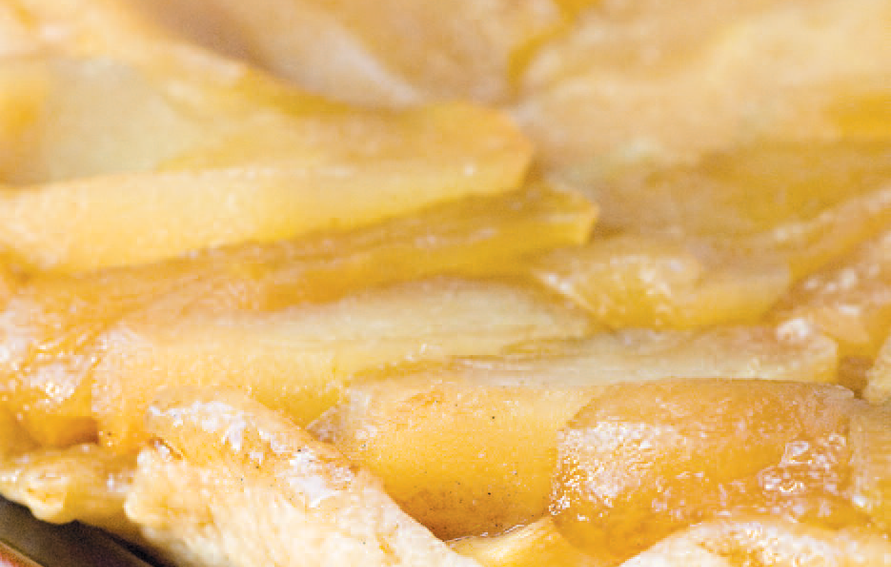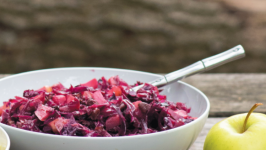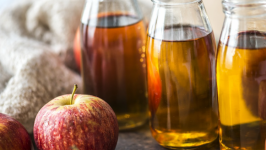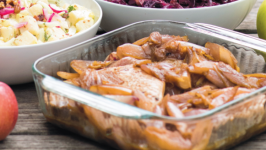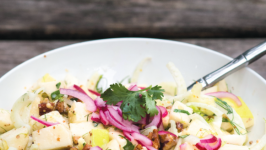Ingredients
- 3 tablespoons butter
- ¾ cup sugar
- 6 large or 8 medium apples, firm and acidic
- pinch of cinnamon or nutmeg, if desired
- chilled dough for 1 (9-inch) piecrust
About this recipe
This open-face apple pastry, with its origins in France, is about as simple and good as it gets. Apples are first cooked in butter and sugar until caramely, then baked under a round of pastry crust. The tart is inverted onto a plate to serve. The crust stays light and flaky, with the apples tender and shimmering on top in their buttery syrup. Use Michigan apples with full flavor and some acidity, such as Golden Delicious or Northern Spy, and add only the slightest bit of spice.
Instructions
In a heavy 10-inch skillet or fireproof baking dish, gently heat sugar and butter until melted; remove from heat. Core apples and cut each into 8 wedges (10– 12 for large or very firm apples). Arrange half in a closely packed layer in the dish, pressing lightly into the sugar mixture; arrange the rest in a second layer. Cook over low to medium heat for about 30 minutes, until the juices are bubbling and brown and the apples somewhat tender. Remove from heat for 5–10 minutes.
Preheat oven to 425°.
Roll out pastry dough into a circle big enough to cover all of the apples. Lay the dough on top of the apples and trim it quickly so it all fits inside the pan. Put immediately into hot oven and bake for about 20 minutes, until crust is browned and cooked through.
Allow pan to cool slightly, then carefully but quickly (beware of hot, syrupy juices) invert onto a serving plate. Serve warm or room temperature, with a dollop of cold heavy cream, crème fraîche or simple ice cream.
Note: Apple skins are high in phenols, quercitin and fiber, all shown to be effective against heart disease and other chronic health concerns. So maybe you like the idea of eating the peels, but not the reality of long skins in your dessert? Try the “partial peel”: With a paring knife or peeler, just peel a spiral around your apple that only takes about half of the skin; then core and slice as usual. The remaining skin is in small bits and will hardly be noticeable, but much of the nutritional benefit remains.

